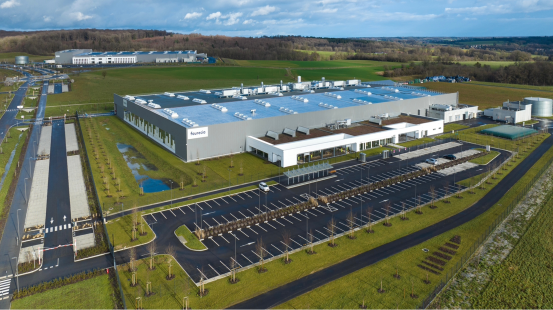FORVIA inaugurates its Allenjoie industrial platform dedicated to the mobility of the future

As FORVIA's technological flagship in France, the site houses two major sites showcasing the Group's vision of a more sustainable automotive industry.
Major strategic investments in France dedicated to new technologies
These sites showcase FORVIA’s commitment to investing in solutions for the mobility of the future from hydrogen storage systems to sustainable seating solutions. The sites represent over €250 million of investment for the Group in France and employ over 600 people. Customers include the major French and European OEMs underlining FORVIA’s role at the heart of the French automotive ecosystem.
Key milestone in FORVIA’s hydrogen strategy; the plant has a capacity of 100,000 tanks a year
One of the sites in Allenjoie is the first mass production plant of hydrogen storage tanks for mobility applications in Europe and production is already underway since the start of 2023.
Already in 2022 FORVIA delivered 10,000 hydrogen tanks to its customers globally and is the first automotive supplier in the world to have a production footprint across major regions including Europe, China, Korea and soon in North America. Supporting FORVIA’s ambition to provide safe, affordable and convenient hydrogen storage solutions for the mass market, we plan to cut production costs by five within two years.
Both in Allenjoie and at FORVIA’s global R&D center for hydrogen, also located in Eastern France, we are supporting our workforce in the transition from exhaust systems to hydrogen storage through proactive training and requalification programs.
Best in class in Industry 4.0
Both sites demonstrate FORVIA’s ambition to achieve the highest level of safety, quality and competitiveness. The site dedicated to the assembly of complete car sets has a production capacity of 2,000 car sets per day. This represents the latest in digitalization, automation and equipment flexibility, including a seats storage capacity of 1,500 finished products, to ensure flexibility and on time sequenced delivery to its customers.
Industry-leading example of sustainable production sites
Designed to meet the most rigorous environmental standards, both sites have been awarded the BREAAM Excellent certification. The two sites were one of first to achieve this status with the hydrogen facility being the first industrial site in France and only the second in Europe to have this certification.
Patrick Koller
hief Executive Officer of FORVIA
Related documents |
Download all | 2.84 MB | |
|---|---|---|---|
| Press kit | 09th October 2023 | 118.11 KB | |
| Press release | 10th September 2023 | 3.01 MB |


